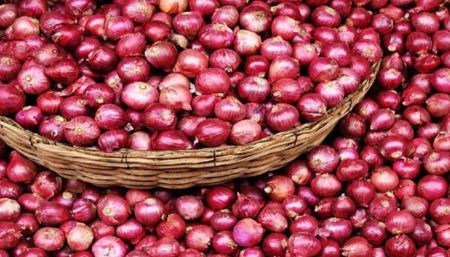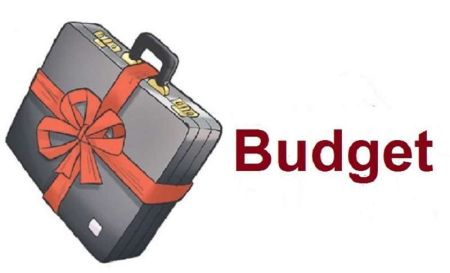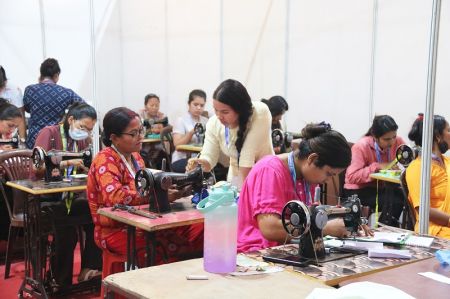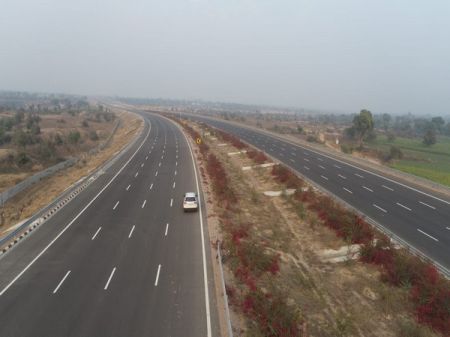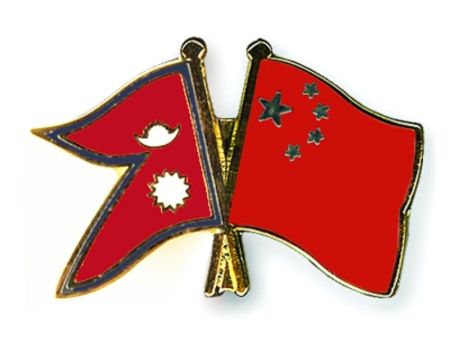By Sushila Budhathoki
.jpg)
The Nepali paper industry is one such industry in the country that has withstood the ongoing political turbulence to run in profit. This is also reflected in the fact that handmade Nepali paper products produced by this industry contribute around 10 per cent to Nepal’s total export and this contribution is growing by 7 to 8 per cent annually. Bikash Ratna Dhakhwa, President of the Federation of Handicraft Association of Nepal (FHAN) is quite happy with the growth of the Nepali paper business even during such harsh times. He says, “Had there been a good environment for industries, politically as well as economically, this sector would have seen a massive growth.”
The ever-growing market demand of the Nepali paper or Lokta Kagaj, as it is locally known, is the main reason behind the steady performance of the Nepali paper industry. Lokta has been successful in attracting many craft lovers nationally and internationally. Products made of Lokta are a major attraction at every handicraft trade fair. Dhakhwa says, “We have been organizing numerous handicraft fairs to promote the business of these products. We are now organizing the 10th handicraft fair which would definitely be fruitful to the Nepali paper business among other handicraft businesses.” According to FHAN, the export of paper products increased by 32 per cent to Rs 410 million in FY 2011/12 from Rs 310 million in 2010/11.
Once replaced by the massive import of cheap papers from China, the Lokta has regained its lost sheen because of its quality and uniqueness. Having seen the prospects, industrialist like Bishnu Das Dangol, former Managing Director of Bhaktapur Craft Paper Ltd- the first business enterprise to produce and export Nepali handmade paper - are being lured into the business again. Dangol has joined the company back after a long gap as its Executive Director. “I have entered this business again because it involves people from the grass-roots to those at the high level. The paper industry can become the major industry to eradicate poverty in our country,” he says.
According to Kiran Kumar Dangol, President of HANDPASS (Nepal Handmade Paper Association) there are around 300 companies involved in the Lokta business and together they have employed around 50,000 people. He says, “Lokta is a big business today. We export Lokta products worth around Rs 40 to 50 million yearly. Europe accounts for 60 per cent of our export while the USA for around the remaining 40 per cent.”
Benu Das Shrestha who is originally from Sindupalchok district has been making and selling the Lokta paper for the past two decades and is inspiration to many. He says, “Many of my friends have followed in my footsteps. Lokta is a low-cost business that we can afford to run and can start it with the help of just around 10 people.” It was more than 20 years ago that he started his Lokta factory, Jugal Nepali Haate Kagaj Udhyog, at Jalbire, his birthplace in Sindhupalchok. Today, Shrestha earns around Rs 60,000 a month and is also hopeful about expanding his business in the coming years.
For industrialists like Satyalal Shrestha, who has spent 25 years in the Lokta business and is the owner of Bagmati Paper Company, it is a business of creativity. In the beginning, he used to produce the plain Lokta paper. But he soon found new ways to diversify his business and today he produces several creative paper products. “We design various items according to the needs of the customers and we often consult with them before making new products,” he shares.
Shrestha produces a range of products from wall hangings, photo-frames, albums, mirrors, and paper vases to the extra-ordinarily made paper jewelries. His creativity is seen in the marvelous set of paper tables which are perfect even for dining. However, he has no showroom in Nepal and anyone wanting to buy his products has to visit his factory and give an order in advance. The average annual turnover of his company is around Rs. 20 million.
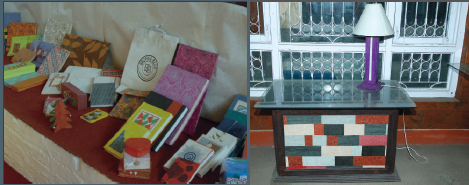
The Lokta paper has a long history in Nepali paper usage. Although Lokta is being produced in Nepal from as early as the twelfth century, it got international recognition when the UNICEF started to buy and use it for important documents. Known for its long lasting quality, the handmade Lokta has been traditionally used for official purpose for ages. But today it is used for many purposes. The Nepali paper used for the legal and government documents is produced with a Japanese technology in A4 size. This paper is made from not only the bark of the Lokta tree but also other plants like Argeli (Edgeworthia gardeneri), babiyo (Eulaliopsis binata), hay, leaf of cardamoms etc.
Many farmers have contributed to run the Lokta business and most of them are working at the community level enterprises in association with different groups of collectors. They produce the Lokta paper according to the demand of the buyers from different paper industries. The paper can be used directly after buying from them. However, processes like shorting, coloring, processing, etc at the paper factories further enhances the quality of the Lokta paper. Dangol says, “Unlike other products, the Lokta paper is 100 per cent handmade. All the raw materials are produced locally.”
Lokta products are of two categories- pure and mixed ones. In the market, one sheet of pure Lokta paper weighing five gram costs around Rs 6 while the other paper with same weight made with mixed products cost around Rs 5. Similarly, a Lokta sheet weighing 20 gms costs Rs 18 while the mixed paper in the same category costs Rs 16. Lokta products are available as sheets, note-books, photo albums and picture frames, writing sets, and gift- boxes, among other products such as carry bags, calendars, file-folders, lampshades, greeting cards, wall papers, photo frames, art paper, picture albums, gift sets, postcards, paper jewelry, jewelry boxes, telephone diaries, etc. The price for these products differs with the size, weight and quality.
The Lokta plant is found in 56 districts of the country. According to the FNCCI’s document ‘Business Promotion Strategy (2012 – 2016)’, Lokta is listed among the 20 species of Non Timber Forest Products (NTFPs) including some exotic species like Mentha, chamomile, lemongrass, Dalchini, etc. The Western Mid Hilly regions and the hilly district of Gandaki and Dhaulagiri Zones - Baglung, Myagdi, Parbat, Kaski, Lamjung, Syangja, and Tanahu - are the main locations of the Lokta plant. Usually, the Lokta plant is harvested when it is mature enough.
Brand Nepal
Lokta paper has been identified among the 19 major exportable goods of the country. It has become a brand name in itself and is known as a quality paper all over the world. Today, Lokta paper’s international market is far bigger than its local market. According to the traders, Lokta products have a huge market in countries like the USA, Canada and many European countries like Germany, the United Kingdom, France, Italy, Denmark and lately, Japan in Asia.“Due to the unique feature and quality, there is a high demand for the Nepali paper in the international market,” Shares Bisnu Das Dangol.
With its attractive texture, durability, strength and resistance to insects, Lokta products are popular even in the digital age and this is an amazing truth for the people involved in this business. Unlike the previous Lokta papers, the Lokta papers today are well-finished products available in a range of colors, textures, patterns and prints. They can be customized for different logos, graphics, colors, designs and paper weight. The success of Nepali industrialists in developing a variety of Lokta products has been a plus point for this business. Satyalal says, “The customers are demanding more and more varieties of Lokta products.”
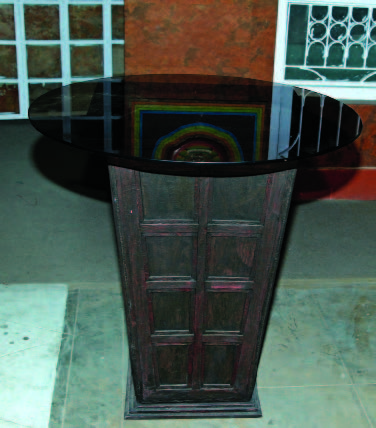
Bisnu Das Shares, “If we can market our products aggressively, all national and international organizations will start using the Nepali paper for their important documents in no time.” The paper is among the costly papers available in the international market. The demand for Lokta-made gift items like cards for different occasions such as weddings, birthdays etc is high in the Nepali market while Lokta-made notebooks, boxes, wrapping- papers, different kinds of printed papers are sought after internationally. Recently, Lokta has found popularity in the making of fashion accessories as well.
Future in paper
Due to the growing demand, the need for conserving and promoting Lokta and producing high quality papers has emerged at the same time. However, the lack of sustainable harvesting and cultivation process has put the raw materials used for producing the Lokta paper at the risk of extinction. Saraswati Rai, Operation Manager at Himalayan Bio-Trade (HBTL) - a community-based enterprise - is concerned about the negligence in the preservation of the Lokta plant. According to her, it would be difficult to keep up the quality of the Lokta paper in the long run in the absence of concerted efforts to preserve the Lokta plant. “The Lokta products are not being produced in a sustainable way.” The Lokta plant has a unique ability to regenerate and reach maturity within four to five years after the first cutting. But it demands skilled manpower for its harvesting. This ability should also make the preservation of the Lokta plant comparatively easy. Lokta can generate much more employment at the grassroots even if the farmers take Lokta growing as a seasonal business. Rai says, “If we have trained collectors for harvesting Lokta and if we can maintain the quality, the business has a very bright future ahead.” HBTL buys papers made from Lokta or argeli from the farmers. Though Rai shares that the company’s overall production has declined in comparison to the previous years, she is confident of the everlasting market of the Nepali Paper. HBTL’s average annual turnover is around Rs 30 million of which its paper business constitutes Rs 20 million.
If given due importance, the Lokta paper stands fairly high chances getting much bigger and better national and international markets. “International buyers are looking for unique and valuable products like the Nepali paper which is basically exported as handicraft products,” shares Bisnu Das.
According to the traders, though the existing Lokta products are good enough and doing very well, there is an urgent need to develop even better and advanced products. Many organizations are facilitating the designers who could design Lokta products to meet the international demand. They are also providing training to the new generation people who are attracted to paper production, designing and marketing. Some of the organizations and Lokta collectors have even started conserving the Lokta plants. The traders involved in the Lokta business have started getting cash incentives, four and a half per cent re-financing and also export incentives. So, if you are planning to venture into a long-term business in Nepal that has withstood the tests of time, then the Lokta business could be the right place to invest in.





